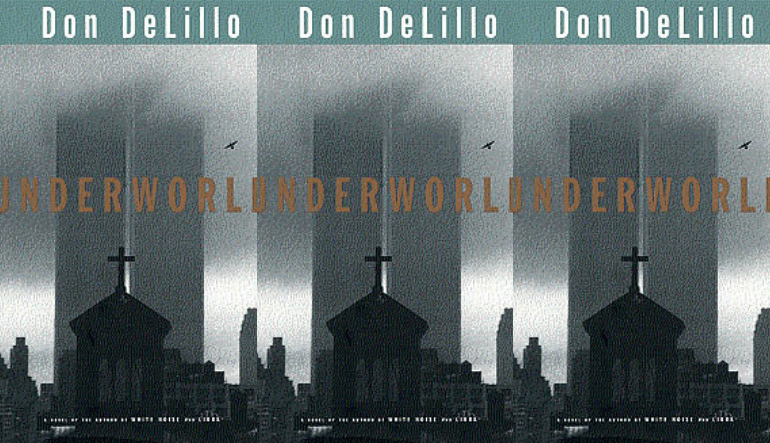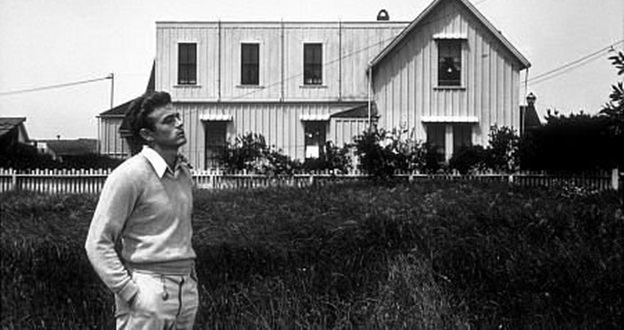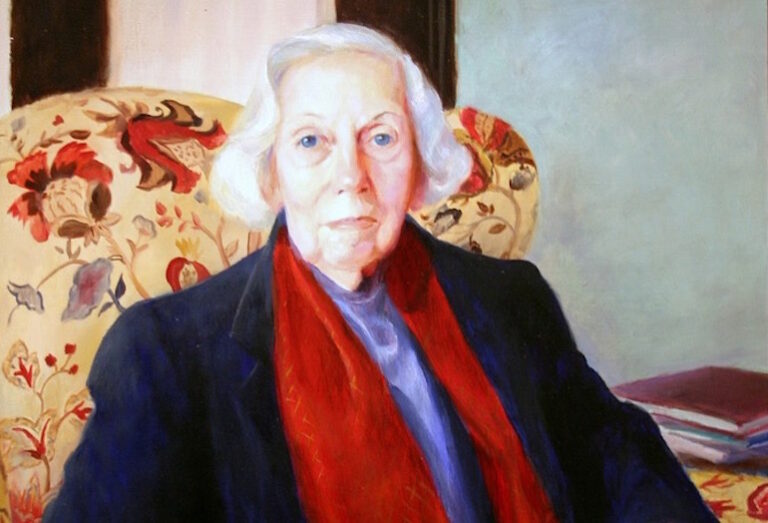Origin Stories: Don DeLillo’s UNDERWORLD

Novelists, like paranoiacs, see connections where other people don’t, which is to say that both are always trying to uncover plots. Don DeLillo is a dean of both groups, so it’s fitting that his 1997 masterpiece, Underworld, is a conspiracy of people, events, and cultural touchstones (both real and invented) that seem at first blush unrelated.
As DeLillo recounted for Gerald Howard, Underworld began with a poetic and only slightly paranoid connection:
I was reading the newspaper one morning in October 1991, and there was a story about the fortieth anniversary of a legendary ball game between the Giants and Dodgers, the third game of the play-offs, which the Giants won dramatically on a ninth inning home run by Bobby Thomson…It seemed to be a kind of unrepeatable event, the kind of thing that binds people in a certain way. Not only people who were at the ballpark, but fans in general and even nonfans who were not necessarily interested in the baseball implications. There was a sense, at least for me, that this was the last such binding event that mainly involved jubilation rather than disaster of some sort. Anyway, I went to the library and found a reel of microfilm for the New York Times of the following day, October 4, 1951. I didn’t know what I was looking for, but what I found was two headlines, symmetrically matched. It was like fitting together two pieces of ancient pottery. One headline concerned the ball game, “Giants Capture Pennant” and so on. The other headline concerned an atomic test that the Soviet Union had set off in Kazakhstan. Very few details were given, but the two bold matching headlines caused a sort of pause in me. There was a strong sense of the power of history, and this is what got me started thinking about the Cold War.
DeLillo’s research uncovered another wonderful coincidence: J. Edgar was at the famous baseball game. The fact struck DeLillo “with the force of revelation, because it meant that I had someone in the Polo Grounds who was intimately connected to what had happened in Kazakhstan.”
DeLillo published what eventually became Underworld’s prologue as a novella in Harper’s. The title, “Pafko at the Wall,” refers to the the left fielder who watched the game’s momentous home run—nicknamed “the shot heard round the world”—sail over his head. That baseball would keep sailing, in the plot of Underworld, through five decades of the Cold War and its aftermath, linking the extraordinary panoply of the book’s characters.
But DeLillo didn’t figure that out immediately. He told Gerald Howard what happened next:
When I finished the prologue and started Part One, I began the narrative on the day following the game. See, I had no sense at this point that I wanted to create an enormous separation in time between the Prologue and the beginning of the book proper. So what is now Part Six was originally Part One, and I wrote twenty pages, was having a wonderful time describing street games in the Bronx — and realized, finally, that this was all wrong. And it wasn’t until I finished twenty or twenty-five pages that I decided I had to do something drastic. And then the idea of a Part One that begins roughly forty years after the Prologue occurred to me. Then I realized that I would have to work backwards, toward the day of the ball game.
The moment he decided to vault forward in time, he writes in a 2015 afterword, is the moment that made the novel.
#
When DeLillo turned “Pafko at the Wall” into Underworld’s prologue, he also rechristened it. The new title, “The Triumph of Death,” comes from a painting by Pieter Bruegel the Elder which J. Edgar Hoover finds reprinted in the thrown-out pages of a Life magazine. The Bruegel work is a panorama of slaughter in an apocalyptic landscape, and it’s echoed throughout the book—in the nuclear hellscape evoked by Eisenstein in a (DeLillo-invented) movie called Underwelt, in the horrible and possibly apocryphal fates of atom-bomb downwinders, in the “Museum of the Misshapen” in Kazakhstan. It also serves as a metonymy of DeLillo’s project: a parade of intricate miniatures. But you can step back from a painting; you can take it all in at once. A novel‚ even when it swans virtuosically through time and place, must be read linearly. Every section of Underworld provides a historical remove from which you can see every other section more clearly, but as with a historical era itself, you can only absorb the book’s vast canvas in retrospect.
David Busis’s writing has appeared in The New York Times, The Wall Street Journal, The Atlantic online, and elsewhere. A graduate of the Iowa Writers’ Workshop, he is working on his first novel. Find him online at DavidBusis.com.


